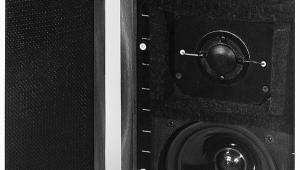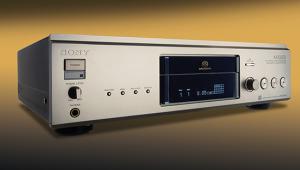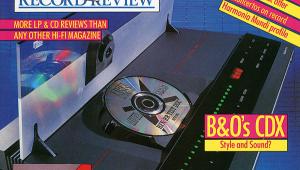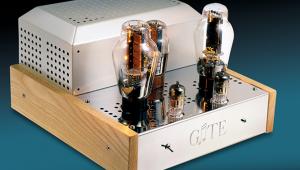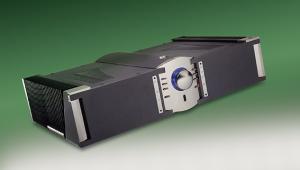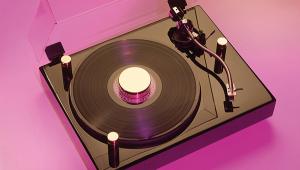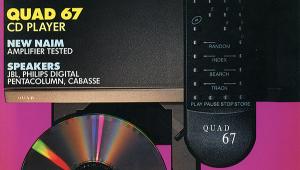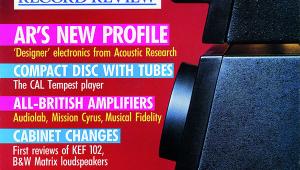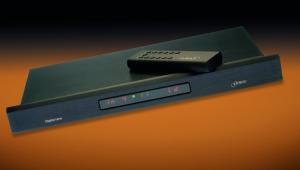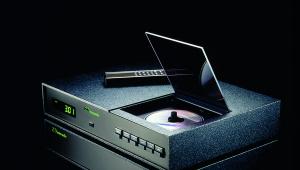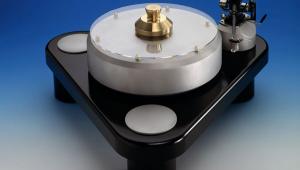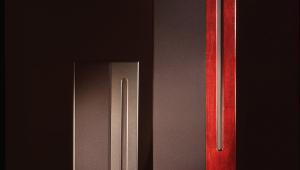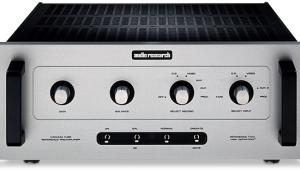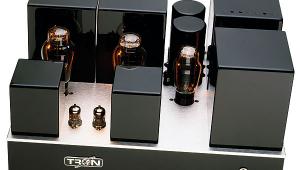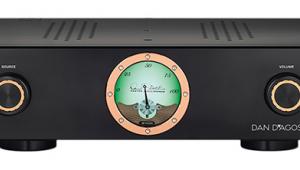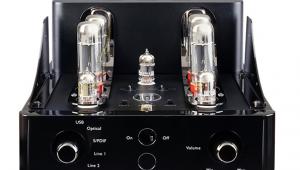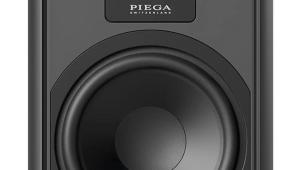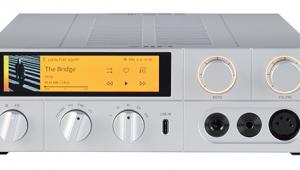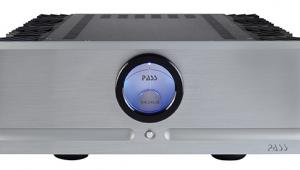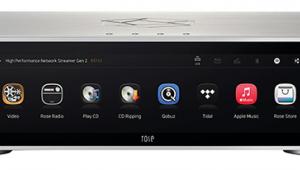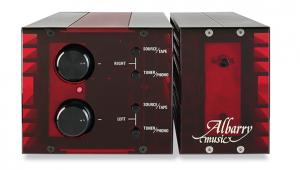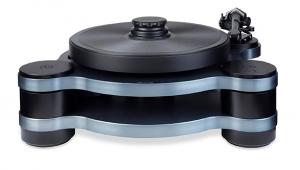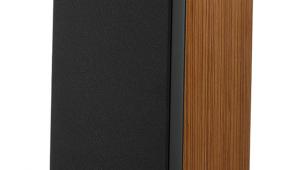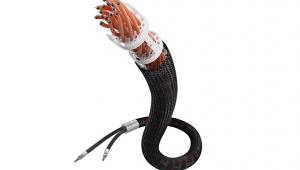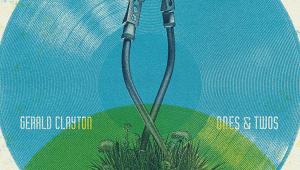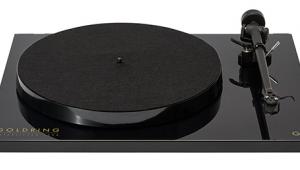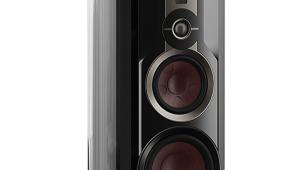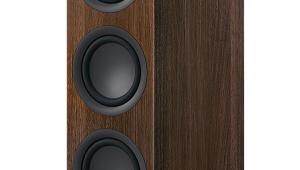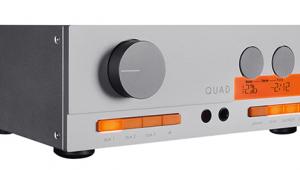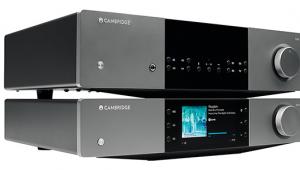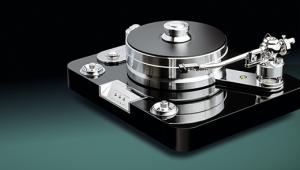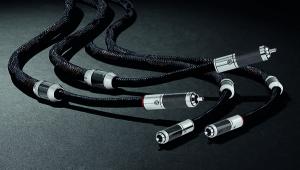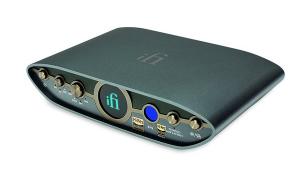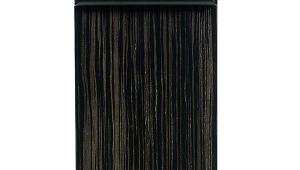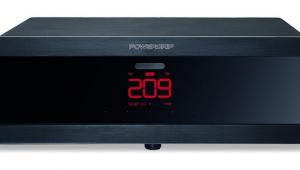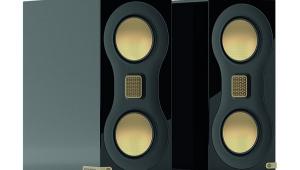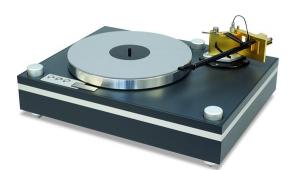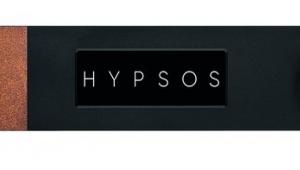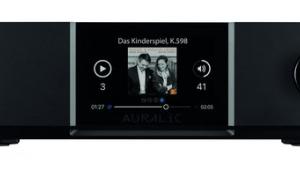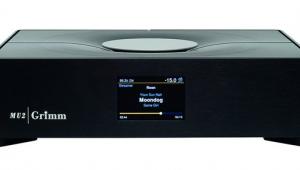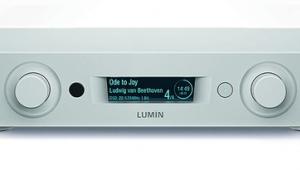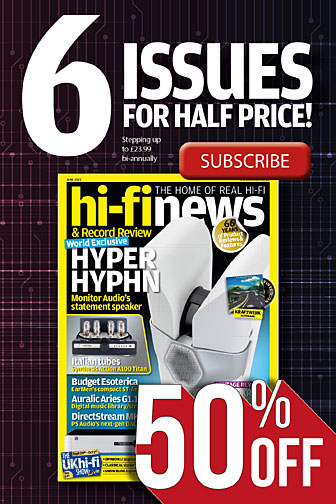Bow Wizard CD player
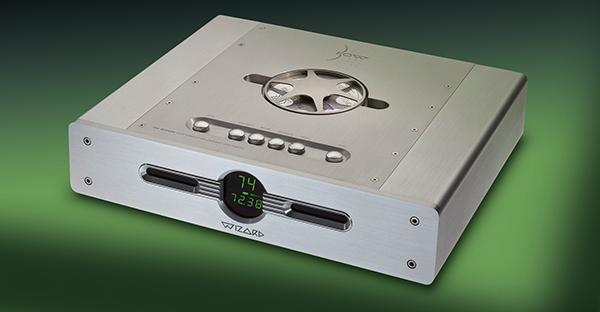

Whether it’s caution or obstinacy, numerous high-end brands are studiously avoiding DVD. Some argue that it’s the dearth of half-way decent OEM transports, others that they’re waiting until dust settles in the forthcoming DVD-A vs. SACD format war. Then there’s the fact that CD is the ‘last format to eschew data reduction or data compression’, that there are tens of thousands of readily available CD titles, and that CD has a huge owner base. Whatever the justification, Bow has joined Linn and others in seeing out this century with a CD player. But not just any CD player.
Bow’s belle
Although the Wizard – designed to match the Wazoo integrated amp – costs a relative pittance compared to the top machines offered by Krell, Linn, Wadia, Mark Levinson, etc, at no point does its physical presence suggest anything less than a five-figure purchase. This is a luxury device oozing class in both its styling and its fit and finish.
Given that its designer, former architect Bo Christensen, has a spotless track record which commenced with the radical Primare ‘cubes’ of the early 1980s, it’s no accident that the Wizard calls to mind other ‘natural metal’ sculptures which marry the aesthetic and the functional. It is a delight to behold and to operate, and as Bo has always demonstrated a novel approach to ergonomics, I’m pleased to tell you that one of the Wizard’s main party tricks is its remote control, dubbed the Wand. Geddit? Wizard, wand.
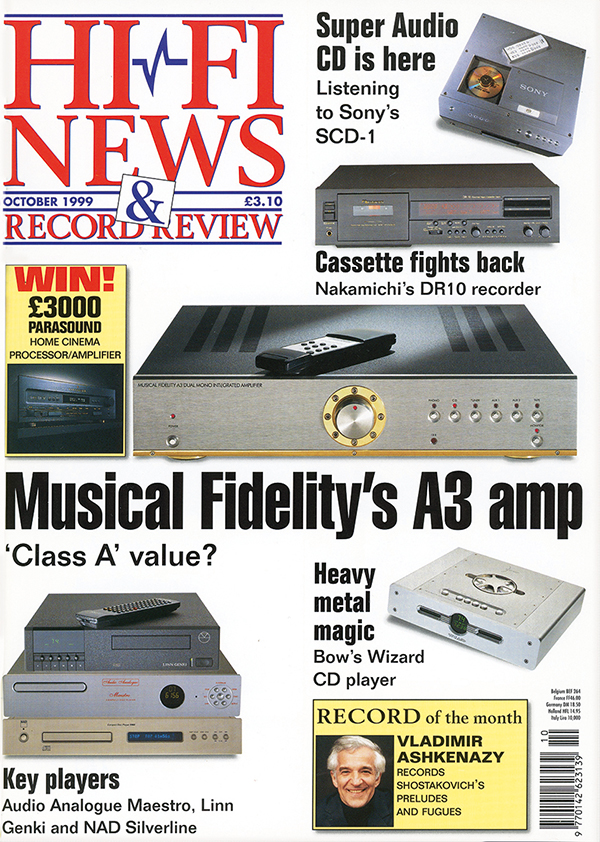
This is noteworthy for its sheer elegance, its jewel-like construction and its too-clever-for-mere-mortals layout. Machined from a billet of aluminium, the Wand sports 14 buttons controlling every command, as well as operating the Wazoo amplifier’s volume. Press one of the buttons and a tiny green LED flashes, telling you that you’ve put the Wand into numerical mode for direct-track access.
In addition to the Wand are buttons running across the player’s top surface to control the main transport functions. The Wand deals with the basics plus the programming modes.
Because the Wizard is a top-loader, Bo has been able to grace its front panel with a funky, finned display which isn’t hindered by a CD tray aperture. The detail makes it look like some steam-punk prop, calling to mind the designs seen in 1930s SF serials like Flash Gordon. The central display is shaped like a Daniel Roth watch case, with green numerals indicating track and time. Two slim subsidiary displays fan out to the sides to reveal legends such as ‘stand-by’, ‘pause’ and ‘repeat’.
Clean and cool
Bow has addressed the problem of dust entering through the spoked disc stabiliser by supplying a padded disc to leave in place when the player is not in use. Its underside is covered with leather to protect the exposed laser lens. This ‘open-well construction’ is also said to eliminate static build-up. Despite the minor inconvenience of placing the lens protector in place after use, I have to admit that the thing looks so damned clean and cool that I could easily learn to live with a player which doesn’t open at the front.
Cleanliness rules at the back, too, the Wizard arriving as standard with single-ended phono and balanced XLR analogue outputs and three digital outputs (75 ohm BNC, 75 ohm RCA and 110 ohm AES/EBU). Also at the back are the on/off rocker, an IEC mains input and a space for an upgrade that I’ll get to shortly.
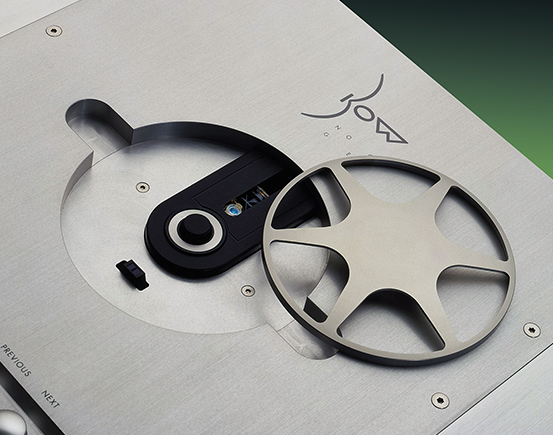
Precision-engineered mechanical parts and components are selected by Bow for ‘their electrical performance, long-term thermal stability and audiophile-grade sound quality’. The company also boasts – ‘Bow-sts’? – that its assembly procedures are based on techniques used in the manufacture of ‘critical medical and military equipment’.
The heart of the Wizard is a heavily modified die-cast Philips CDM12 Pro CD transport mechanism ‘stripped of all sonically degrading capacitors’. Bow also employs the Inter IC-Sound (I2S) transfer bus, believed to isolate audio data, word clock and bit clock, to eliminate a major source of jitter. And, again in keeping with an isolationist policy, the transport and the digital, analogue, display and microprocessor circuits are fed by seven separate, regulated power supplies. Add to it the kind of bank-vault construction seen in the likes of the Linn CD-12 and Mark Levinson transports, and you have a device which evokes stability and solidity throughout. Measuring 434 × 110 × 360 mm (whd) and weighing a chunky 11 kg, the Wizard demands pride of place, as do all top-loaders.
Despite its plethora of outputs, the Wizard should be judged primarily as a single-chassis CD player. Whether or not Bow Technologies plans to issue a standalone DAC I’m not sure, but, in stressing the Wizard’s worth as a long-term investment, Bow has endowed it with ‘modular mainframe construction’ to make it amenable to upgrades and ongoing design improvements. The Wizard’s ‘continuous calibration Bitstream’ D/A converter can be upgraded to 96 kHz/24-bit oversampling, the upgrade including installation of a digital input (the aforementioned space) to accept the output from a DVD player or other source. And, should Bow ever find a worthy DVD transport, I wouldn’t be surprised to find it housed in this chassis.
![]() A kind of magic
A kind of magic
Fed into Musical Fidelity’s Nu-Vista pre/power amps driving Sonus Faber Guarneris, the Wizard was compared to the almost identically priced Krell KAV300cd, the Musical Fidelity X-RAY, and the sadly discontinued Marantz CD12/DA12 with full Ken Ishiwata benediction. Wiring throughout was Kimber, with a brief bout of MIT interconnect. Mains wiring, too, was Kimber or Transparent, the Bow not finding favour with all-silver Siltech wire.
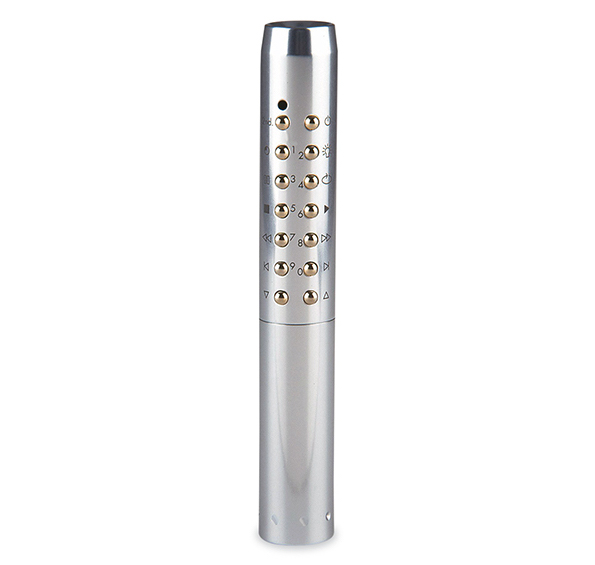
Run-in and warm up are crucial to the Wizard, so were addressed before any listening commenced. And I’m glad I managed to resist temptation because this is as finely tuned as any CD player I’ve tried. It demands top-class ancillaries, clean mains, rigid siting and carefully chosen wiring, or it will misbehave, its naughtiness coming in the form of slight sibilance. So free is the Wizard with detail, so crystal-clear the delivery and so precisely cut the transients that it will let you know exactly what CDs you own that were recorded, mastered or pressed without due care.
Hit the road
Once that matter was out of the way, I was able to revel in everything else, that slight but discernible sibilance the only area of concern. And my pointing out the Wizard’s antagonism to lesser ancillaries is like berating a Lotus Elise because it lets you feel every bump in the road. This is not criticism, it is recognition of a specific state of affairs which demands a bit of extra care in system-matching, nothing more and nothing less. Furthermore, when you hear how elegantly the Wizard performs when set up ‘just so’, any concern you have for my remarks will have diminished importance.
This is certainly a player for those who cherish vocals, Mesdames Wynette, Parton, Twain and the like aside. Although the Wizard leans toward the clean and cool – more Krell than Musical Fidelity or Marantz – it exhibits enough air and atmosphere to cosset acoustic instruments. I have no idea what Bow’s design team uses for reference material, but someone in Denmark certainly must adore singers like Lou Rawls, Barry White and others whose voices possess richness, texture and depth. The Wizard presents them with just the right amount of body and scale to convince you that you’re hearing a human voice, not a remastered facsimile. And if you can’t help analysing as you listen, the Bow also lets you know when the recording was too closely miked.
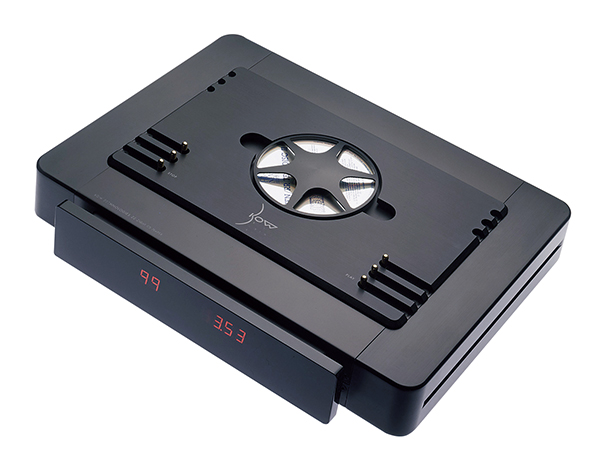
Exceptional detail provides the little clues, like throat and teeth sounds. When it comes to musical instruments, this can manifest itself by revealing the mechanics: dig out those old Wilson Audio ragtime recordings followed by a solo, mint-condition baby grand to tell you what a piano’s hammers contribute to the sound as they strike. Fingers on frets, mouth on reed, this player hides nothing. Better still, it’s a, uh, wizard with spatial concerns, especially with live recordings in which you can confirm the placement of the performers.
Conclusion
The Wizard costs £3495 including the Wand. On pride-of-ownership grounds alone, it’s worth every penny. And the sonics, once you’ve addressed that minor sizzle, are rewarding enough to justify comparison with far costlier hardware. It’s a real thoroughbred.
